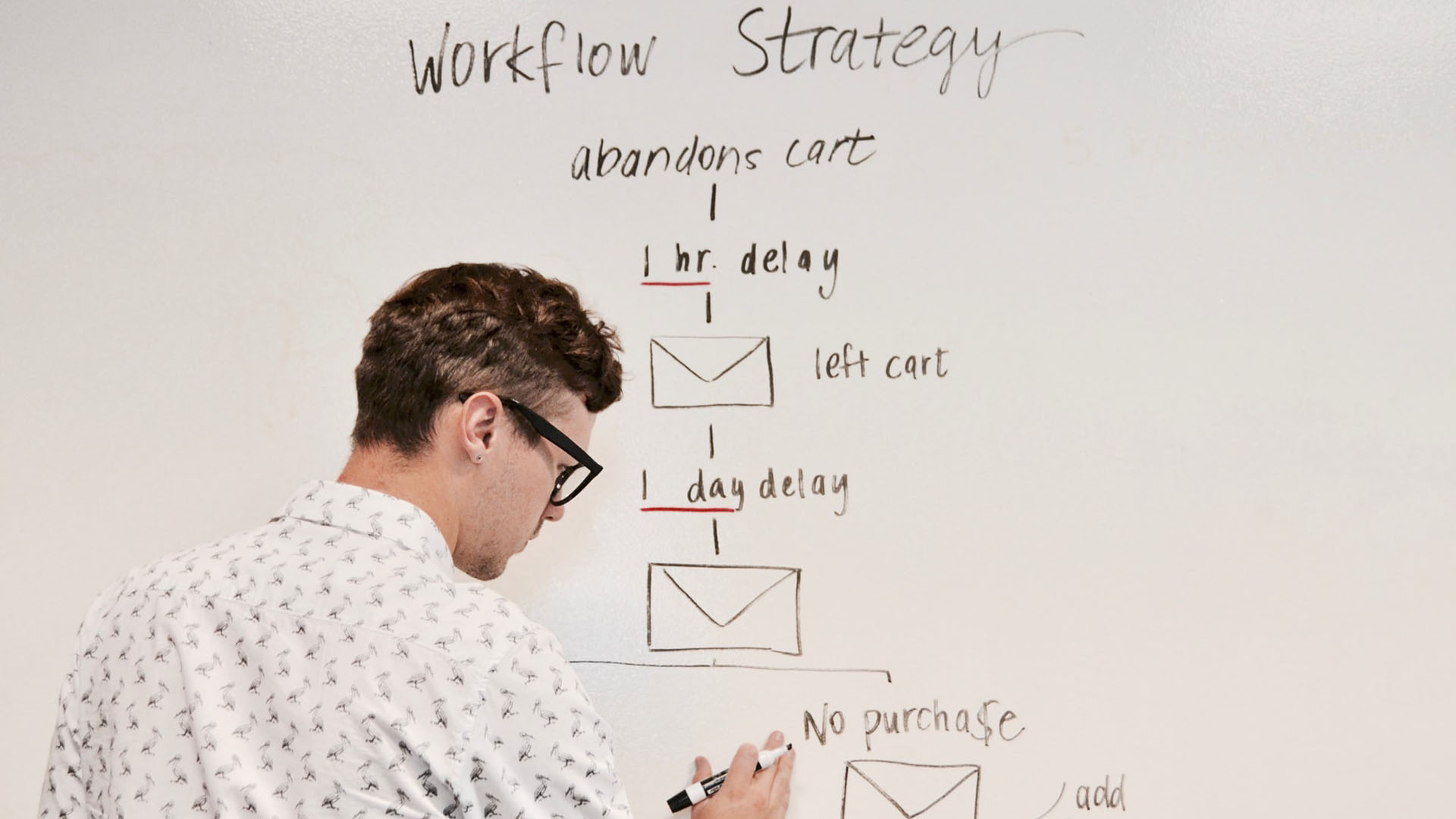The best marketing email examples for small businesses

Email marketing is a powerful way for you to communicate with potential customers, and persuade them to buy from your small business. People on your email list have already signed up to get more information from you, and now you've got their details saved with the best CRM software.
So how do you capitalize on that interest and turn them into paying customers? It’s a delicate process. You need to balance your email marketing strategy with the right campaigns and messaging, so you can keep people engaged. We can help.
In this article, we’ll explore some proven marketing email examples and techniques that you can use to drive leads through your marketing funnel, and get them to buy. You’ll be able to create strong email campaigns, understand the types of emails you need to send, hone your messaging, and discover the best marketing tools and software to reach your goals.
Let’s get into it.
Understanding the context for your email marketing
Before we get into the specifics, it’s helpful to understand how email fits into your overall marketing strategies and campaigns. We recommend reading through our previous guides, as they’ll provide useful context and understanding.
Email marketing is a great addition to your other marketing channels, like ads and organic marketing. Start with a grounding in marketing 101, and learn what those other channels are. Next, it’s helpful to create some overall marketing strategies, as they will inform your email marketing approach.
Marketing funnels are a critical part of connecting with potential customers and persuading them to buy, and we outlined how to do that with each of the main marketing channels. Email is very much a mid- and bottom-of-funnel marketing channel.
Sign up for breaking news, reviews, opinion, top tech deals, and more.
Here, we’ll assume you already have techniques for getting people to sign up to your email list, through lead magnets, incentives, and other means.
Email marketing campaigns and examples

An email marketing campaign brings together several factors so that you can communicate to the right people in the right way at the right time. Here are some of the areas you’ll want to cover, together with some examples.
Define the purpose of your email marketing campaign
Each email marketing campaign should have a distinct purpose, normally based on what you want the campaign to achieve. This purpose should be closely aligned with your overall business goals and marketing strategies. One email campaign can serve multiple purposes, but be careful not to try to do too much with each campaign.
Examples of email marketing campaign purposes
- Raise awareness of your business and brand to create positive associations
- Share helpful information and educational content with your audience to build trust
- Generate traffic to your website by pointing readers to useful resources
- Nurture leads over time to drive them towards buying your products and services
- Incentivize purchases through special offers, discount codes, and other techniques
Decide what success looks like and track your email metrics
Once you have a campaign purpose in place, you can define how you’ll measure its success. You can use this information to set baselines and make improvements to optimize your campaigns further.
Examples of email metrics
- Email open rate: The number and percentage of people who opened and read your email
- Email click-through rate: The number and percentage of people who clicked on a link in your email and arrived at your website
- Email conversion rate: The number and percentage of people who took a desired action on your website after clicking through
Email automation software will help you track all of these factors, and can be integrated into your website analytics to track areas like conversion and revenue.
Understand who your audience is and the right approach and tone of voice
You need to identify your audience so that you can communicate with them in the right way. This involves analyzing who you’re trying to appeal to and creating marketing personas. Then, you can choose an approach for your email messaging that communicates with your audience in an engaging way.
As you’re considering the right approach, try and put yourself in the mind of your reader. Think about what would most appeal to them. Look at the previous and future email messages they’ll receive, and choose the style of email to complement the overall campaign.
Examples of email approaches and styles
- Visual: Heavy use of images to enhance visual appeal and build your brand
- Interactive: Built-in links to audio, video, and other interactive content
- Informational: Helpful information that informs and educates the reader
- Supportive: Guides the audience through possible solutions using your products and services
- Authoritative: Positions your business and brand as leading experts in your industry
- Promotional: Incentivizes customers to purchase your products and services
Create an email campaign schedule for the messages you will send
Most email campaigns are known as “drip” campaigns, because they send out messages over time. This drip-feed of information keeps you front-of-mind with your readers, and lets you build on previous messages, branding, and goodwill.
This means you should schedule the messages you want to send, at an appropriate frequency for your audience. You’ll want to vary the content so that you’re not over-emphasizing any one particular thing, but you're still supporting your overall campaign goals.
Think about the right combination and timing of your emails to drive readers toward your desired actions, and set the schedule accordingly.
Write the specific email messages you will send to your audience
Finally, you’ll want to create your email messages, which we’ll cover in detail below.
Email marketing messages and examples

Your email messages are at the heart of a successful campaign. There are dozens of different approaches you can use to optimize your messages, and we’ve listed some of the more common examples below.
Example email approaches to create emotion
- Provoke curiosity and intrigue the audience by using questions and suggestions in email subject lines
- Make your readers laugh by using wit and humor in your messaging
- Personalize messages and create authenticity based on information in your email list and CRM
Example email approaches to drive recognition
- Strengthen brand recognition by developing strong and unique imagery that you can share in your emails
- Theme your emails around specific events and seasons
- Share news and updates in your industry that affect your products, services, or customers
- Use different layouts, designs, images, and interactive elements for messaging
- Try out animation and other techniques for an eye-catching result
Example email approaches to build trust
- Show contemporary knowledge by using pop culture to put a different spin on your emails
- Build trust through providing best-in-class guides and resources that answer questions and solve problems
- Follow up on successful purchases, providing additional information, support, and guidance
Example email approaches to drive sales
- Encourage readers to buy your products by using discount codes and incentives
- Inspire urgency in sales emails through limited-time offers
- Vary your “calls to action” to see what leads to the most click-throughs and purchases
Example email approaches to optimize all messages
- Test out different headlines through split-testing and other techniques to optimize open rates
- Open your emails on various devices to ensure they read and display well
- Try out various tones of voice and approaches to your messaging, to see what lands
- Experiment with different parts of your audience’s “buyer journey”, and tailor messaging to each stage
Once you’ve developed your campaign, experimented with your messaging approaches, and written your messages, it’s time to automate your email marketing.
The best software and tools for automating your email marketing

Automating your marketing will save you enormous amounts of time, allow you to schedule your campaigns and messages, and track responses and metrics. Marketing automation will work alongside your CRM software to manage all of your marketing campaigns, via email and other channels.
Our picks of the best software for email marketing and automation include:
- HubSpot: HubSpot provides a complete suite of CRM, sales, customer service, and marketing software, including email automation, workflows, and tracking.
- Mailchimp: Mailchimp offers a wide range of email and automation features that will engage customers and drive interaction with your business. You can design engaging emails, build your email list, manage your campaigns, and implement your strategy.
- Constant Contact: Constant Contact is one of the staples of email marketing services, enabling business owners to create unique email marketing campaigns to reach their customers.
- Zoho Campaigns: Zoho Campaigns provides a wide range of newsletter templates that are very visually appealing for both clients and customers alike.
All of these tools provide lots of great email templates and examples to help you create the perfect marketing messages and campaigns.
We hope this guide provides you with some helpful techniques and inspiration to connect with your email lists, engage with leads, and drive sales.
Further reading on marketing
If you're looking to find out more about marketing, specifically how to automate functions between businesses or generally, take a look at our explainers, which answer the following questions: what is digital marketing; what is marketing automation; and what is B2B marketing automation.

Paul is a professional writer who creates extensively researched, expert, in-depth guides across business, finance, and technology. He loves the challenge of taking complex subjects and breaking them down so they are easy to understand. He can quote 'The Princess Bride' in its entirety and believes the secret to good writing is Earl Grey tea.